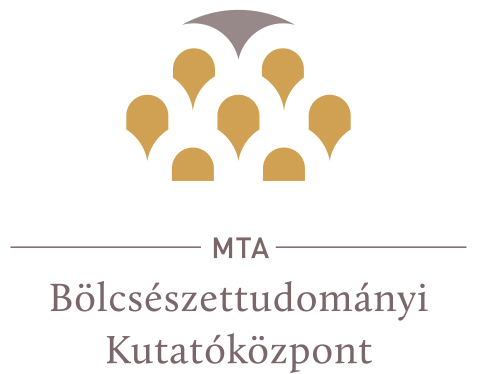Hírek
Stepfamilies across Religions in East-Central Europe (1500-1800) Book Project Supported by the Fritz Thyssen Stiftung (2018-2020) and the HAS-Momentum Integrating Families Project
The book wishes to examine the various forms and functions of stepfamilies and how stepfamilies evolved and survived from the 1500s to the 1800s. We propose to explore this elementary but neglected aspect of early modern family life across several social strata. The multiethnic and multiconfessional character of East-Central Europe provides an opportunity to study the processes of stepfamily dynamics comparatively. The comparison of stepfamily formations and transformations
in the context of different family and household (extended, stem and nuclear) types will offer new insights with regard to the grand issue concerning the role of ethno-cultural characteristics and/or socio-economic conditions in shaping family types.
We propose to address questions related to
1) KINSHIP NETWORKS AND INHERITANCE STRATEGIES: How did the law and emotions interact in inheritance strategies within stepfamilies? How did the “regular” confl icts between widows and their sons who reached legal adulthood over property management and inheritance change in a stepfamily context?
2) THE ROLES OF STEPPARENTS AND GENDERED STRUCTURES OF REMARRIAGE: How did remarriage patterns affect the structures of stepfamilies? Did higher rates of widower remarriage affect perceptions of the stepmother? Has there been a gradual shift from more stepmothers to more stepfathers? Did the roles of stepmothers and stepfathers shift over centuries past?
3) SIBLING RELATIONS: Remarriages tended to have more of a disparity of age, social status or wealth than fi rst marriages. (Though these were more frequent in some social-professionals groups, than in others.) How did the frequent age gap between children from fi rst, second or even third marriages transform the roles of older siblings vis-à-vis their half or stepsiblings? What were the legal and affective implications of the practice of step-sibling marriages? Was there regional variation in these stepsibling marriages based on consanguinity or affi nity taboos and laws?
4) INTERGENERATIONAL RELATIONS: Are the dynamics of stepmother/father-stepson/daughter relationship approachable via terms of endearment and address in letters? Can we learn about stepfamily dynamics through coresidence patterns or if there are patterns of placement of children and stepchildren to facilitate a remarriage? How did the disparities between partners in remarriages affect stepparent-stepchild relations?
5) the dynamic of practices and representations: In what ways did literature and art affect how people viewed their own families? How did the use of space (e.g. the choice of family residence, or the placement of children to facilitate remarriage) refl ect intrafamilial relations?
By making the stepfamily and its variations across ethnic groups and religions the subject of analysis, the session aims to go beyond the historical accounts based on simplistic binary frames (such as the conjugal vs. extended, the emotionless and patriarchal vs. the sentimental, Western and Eastern European families) and convey instead the multivalent forms of preindustrial family dynamics. Additionally, the studies focusing primarily on Northwestern European stepfamilies in
the very recent collected volume entitled Stepfamilies in Europe 1400-1800 (ed. Lyndan Warner, Routledge 2018), will offer further possibilities for regional comparisons. East-Central Europe offers a unique opportunity to study stepfamily relations comparatively, across the ethnic and religious groups and their interactions which shaped family life. German-speaking urban population and settlers, Hungarian, Bohemian, Polish-Lithvanian, Romanian noblemen and
peasants; the ethnically mostly Southern Slavic soldiers and administrators of the Ottoman Empire, many of whom were new-Muslims; Habsburg imperial administration and their supporters, various Protestant branches under German and Dutch infl uences, Greek and Eastern Orthodox and Roman Catholic believers, just to mention a few dimensions, all took their parts in the picture and intermingled in various cases, creating a multilayered scenery of family relationships and family patterns.
SUGGESTED READINGS:
– Collins, Stephen. ‘Reason, Nature and Order’: The Stepfamily in English Renaissance Thought, Renaissance Studies 13 (1999): 312–24.
– Collins, Stephen. British Stepfamily Relationships, 1500–1800, Journal of Family History 16 (1991): 331–44.
– Francus, Marylin. Monstrous Motherhood: Eighteenth-Century Culture and the Ideology of Domesticity. Baltimore: The John Hopkins University Press, 2012, Chapters 5 & 6.
– Laslett, Peter. Parental Deprivation in The Past: A Note on Orphans and Stepparenthood in English history, in Family Life and Illicit Love in Earlier Generation. Cambridge: Cambridge University Press, 1977, 160-173.
– Perrier, Sylvie. Co-residence of Siblings, Half-Siblings, and Step-Siblings in Ancien Regime France, The History of the Family 5 (2000): 299–314.
– Perrier, Sylvie. The blended family in ancien régime France: A dynamic family form, The History of the Family, 3:4 (1998): 459-471.
– Steinbach, Anja and Anne-Kristin Kuhnt and Markus Knüll. The prevalence of single-parent families and stepfamilies in Europe: can the Hajnal line help us to describe regional patterns? Journal The History of the Family 21/4 (2016): 578-595.
– Warner, Lyndan ed. Stepfamilies in Europe, 1400-1800. Abingdon: Routledge, 2018.
– Warner, Lyndan. Stepfamilies in Early Modern Europe: Paths of Historical Inquiry, History Compass 14/10 (2016): 480-492.
– Watson, Patricia A. Ancient Stepmothers: Myth, Misogyny, and Reality. Leiden: Brill, 1995.
– Wilson, Lisa. Stepfamilies in Early America. Chapel Hill: The University of North Carolina Press, 2014.


